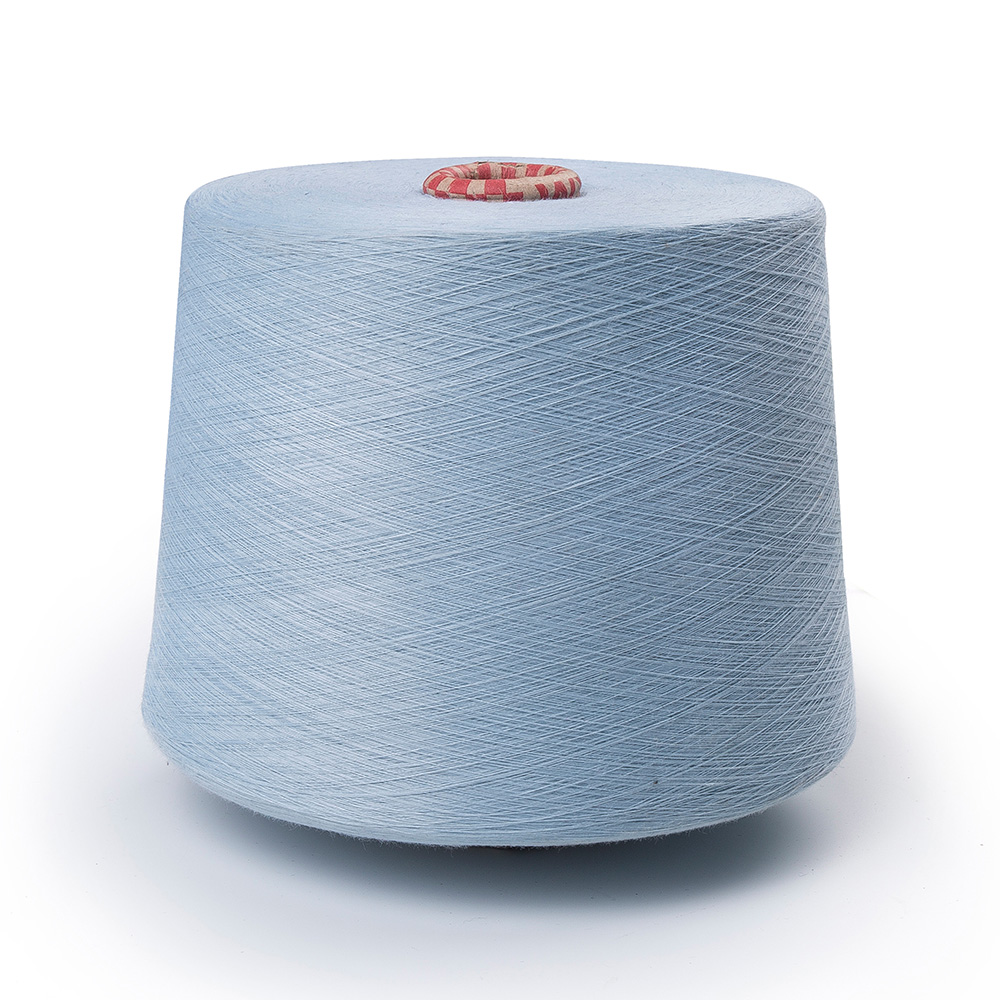If you are interested in some of our products, please feel free to visit our website or contact us for detailed information.

Polyester spun yarn can indeed be blended with other types of fibers, and these blends can offer a range of benefits depending on the specific fibers used and the intended application. Here are some common benefits of blending polyester spun yarn with other fibers:
1.Improved Durability:
Blending polyester with natural fibers like cotton or wool combines the tensile strength of polyester with the softness of natural fibers. This results in fabrics and products that are less prone to tearing or fraying while maintaining a comfortable feel against the skin.
2.Enhanced Comfort:
Blends of polyester with natural fibers offer improved comfort due to the breathability and moisture-absorption properties of the natural fibers. The polyester component adds durability and wrinkle resistance, ensuring that the fabric remains comfortable and presentable.
3.Cost-Effectiveness:
Blending polyester with natural fibers provides an economical solution for achieving desired fabric characteristics. Manufacturers can create textiles with desired performance attributes while managing costs effectively.
4.Color Retention:
Polyester's inherent resistance to fading and color loss makes blends with natural fibers a practical choice for maintaining vibrant and lasting colors, even after repeated washes and exposure to sunlight.
5.Moisture Management:
Blending polyester with moisture-wicking fibers, such as bamboo or Tencel (lyocell), results in fabrics that efficiently transport moisture away from the skin. This ensures comfort during physical activities by keeping the wearer dry.
6.Ease of Care:
Blended fabrics incorporating polyester's wrinkle resistance and shape retention properties are easier to care for compared to some natural fiber fabrics that may require more maintenance, such as ironing or delicate handling.
7.Texture and Aesthetics:
Blending polyester with fibers like silk, rayon, or viscose creates textiles with luxurious textures and subtle sheens. These blends offer a visually appealing aesthetic that can elevate the appearance of clothing and other products.
8.Elasticity and Stretch:
Combining polyester with elastane or spandex enhances the fabric's stretch and recovery properties. This is particularly valuable for sportswear, activewear, and garments requiring flexibility and a snug fit.
9.Environmental Considerations:
Blending polyester with sustainable or biodegradable fibers, such as organic cotton or hemp, can mitigate the environmental impact of textiles. These blends offer a balance between the functional benefits of polyester and the eco-friendliness of natural fibers.
10.Innovative Textiles:
Blending polyester with specialized fibers like conductive fibers or those with antimicrobial properties opens up possibilities for creating textiles with unique functionalities. These textiles can be used in wearable technology, medical textiles, and other innovative applications.
Blending polyester spun yarn with other types of fibers allows manufacturers and designers to create textiles that combine the best attributes of different materials, resulting in fabrics that are tailored to meet specific performance, comfort, and aesthetic requirements.
Polyester Spun Yarn

Polyester fabric has good resistance to various chemicals. Acids and alkalis do not cause significant damage to it, and they are not afraid of mold or insect infestation. Polyester has a wide range of uses, and is widely used in the manufacturing of clothing and industrial products, as well as in the production of polyester yarn.
Polyester Spun Yarn

Polyester fabric has good resistance to various chemicals. Acids and alkalis do not cause significant damage to it, and they are not afraid of mold or insect infestation. Polyester has a wide range of uses, and is widely used in the manufacturing of clothing and industrial products, as well as in the production of polyester yarn.

 English
English Español
Español








